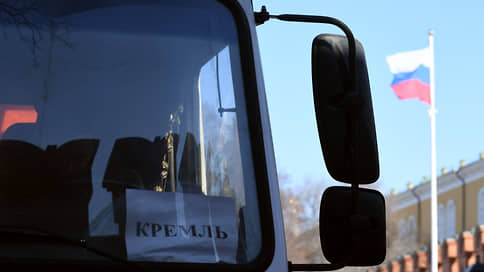ATOR asks to allow tourist buses on Moscow dedicated roads
[ad_1]

The Association of Tour Operators of Russia (ATOR) appealed to Moscow Mayor Sergei Sobyanin with a request to allow tourist buses to travel on dedicated lanes. This, according to representatives of the tourism industry, will make it easier for guests of the capital to get to “popular locations in Moscow.” In this regard, experts remind that tourist buses in many countries enjoy the right of way, and their admission to route lanes is perhaps even more logical than taxis. The mayor’s office has not yet responded to the request. Previously, similar preferences were unsuccessfully sought by motorcyclists, representatives of the car sharing industry and lobbyists for electric vehicles and self-driving cars.
ATOR Executive Director Maya Lomidze asks Moscow Mayor Sergei Sobyanin to allow tourist buses to use dedicated lanes. She conveyed her appeal to the mayor during the celebration of industry representatives awarded the title “Honored Worker of Moscow Tourism.” This would make it easier for tourists to get to “popular locations,” she said, and would make it easier to serve tour groups. Sergei Sobyanin has not yet responded to the request.
We would like to remind you that the traffic rules allow route and school buses, taxis and bicycles to travel on dedicated lanes. In Moscow and St. Petersburg, the fine for driving on the lane is 3 thousand rubles, in other cities – 1.5 thousand rubles. The total length of such strips in the capital, for example, is 462 km, and the network is constantly expanding.
The problem with the movement of tourists around Moscow has existed for many years, Maya Lomidze explained to Kommersant, but now it has worsened again.
Ms. Lomidze cited statistics to support this thesis: at the end of 2023, the tourist flow in Moscow amounted to 24.5 million people versus 17.9 million in 2022.
Previously, she says, ATOR had already contacted various departments regarding allocations, but to no avail.
The capital’s department of transport “Kommersant” could not provide a comment on ATOR’s appeal on Wednesday. Let us note that representatives of the tourism industry are not the first to ask for such preferences. In 2013, the biker community expressed the need to provide access to dedicated lanes for motorcyclists, but the mayor’s office opposed it. In 2018–2020, car sharing companies and the Ministry of Energy proposed opening route lanes for carsharing cars, electric vehicles and self-driving cars. However, even here it was not possible to gain the support of the capital’s authorities. In 2020, deputies from the Liberal Democratic Party proposed amendments to the Code of Administrative Offenses of the Russian Federation to abolish the fine for all drivers for driving on a dedicated road from 23:00 to 6:00, but the Russian government has already opposed this idea.
The head of the Probok.net expert center, Alexander Shumsky, referring to foreign experience, noted that tourist buses everywhere enjoy the right of way. “There are not many such buses in Moscow,” he believes. “If we put them on the lanes, then public transport and road traffic will not suffer from this, and the tourist destination will benefit.”
“A dedicated lane for transporting a large number of passengers in one vehicle is a reasonable request, perhaps even more reasonable than in the case of taxis (they can use the lanes.— “Kommersant”), says Tatyana Rakulova, director of the Association of Road Passenger Carriers. “But it is important to take into account the capacity of the route so as not to end up causing traffic jams for public transport.” I am confident that the Moscow Department of Transport specialists will make an informed decision.” Ms. Rakulova noted that de jure the concept of “tourist transportation” does not exist (regulatory documents include customized and regular transportation), which means that it is impossible to isolate individual vehicles from the flow on this basis. Maya Lomidze also speaks about this problem, believing that an electronic register with the numbers of chartered buses carrying tourists will help.
The capacity of allocated lanes is limited, and often, especially during peak hours, even public transport is cramped here, “to admit tourist buses requires serious justification and calculations,” says scientific director of the Research Institute of Automobile Transport, director of the TAMA association Norayr Bludyan.
[ad_2]
Source link








